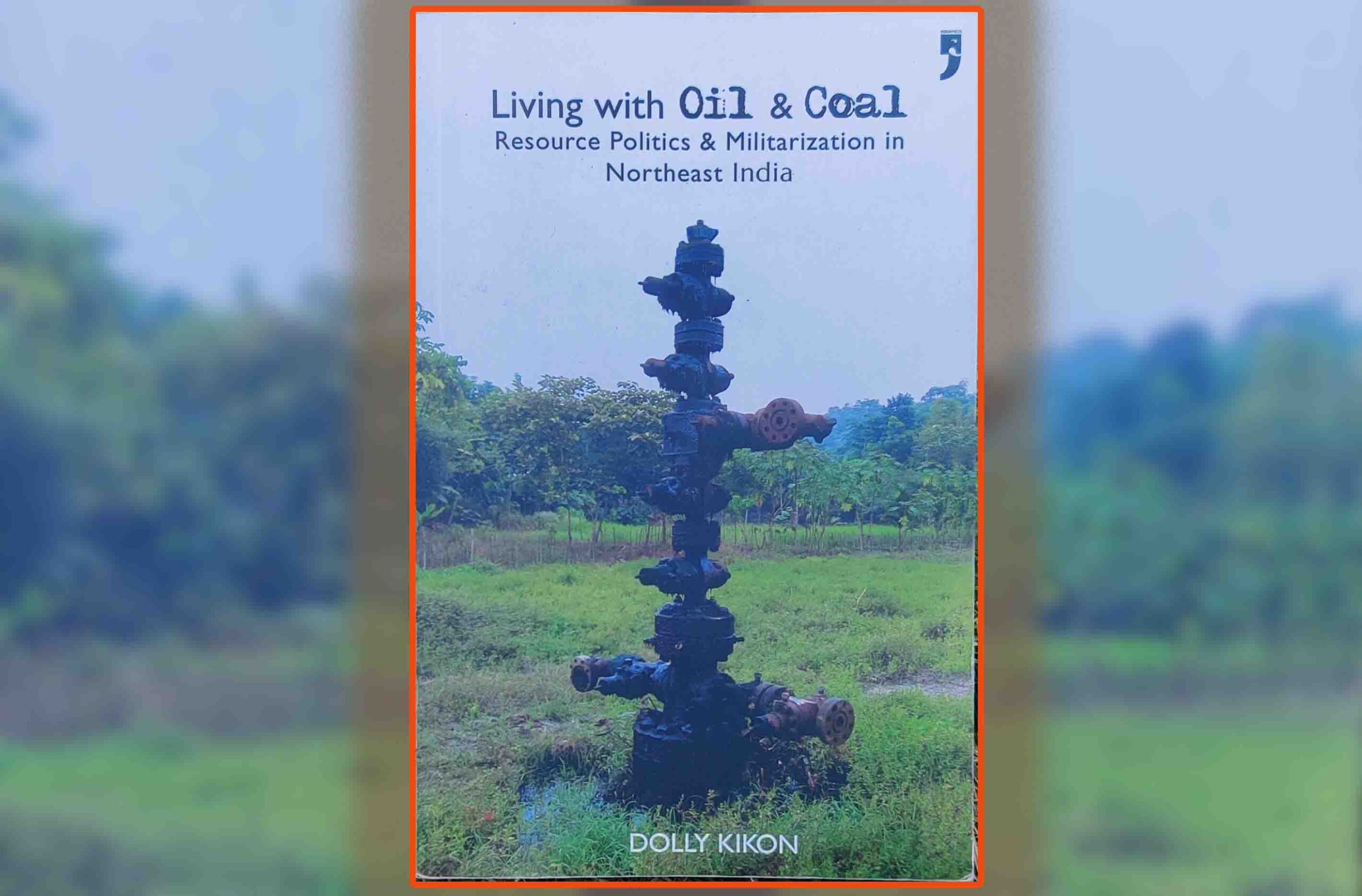Book Title: Living With Oil and Coal: Resource Politics and Militarization in Northeast India
Author: Dolly Kikon
Publisher: Yoda Press
The creation of tea plantations and other extractive industries, together with the discovery of oil in the eastern Himalayan foothills in the nineteenth century, continue to have a significant influence on life in the area. The lives of the Naga, Ahom, and Adivasi people, as well as migrants from other parts of the region, are governed by daily militarism, violence, and the race for natural resources in the Indian states of Assam and Nagaland as they seek to find peace and employment. Dolly Kikon, an anthropologist, examines the intricacy of Northeast India – an area between Southeast Asia and China where borders are formed, contested, and maintained – using in-depth ethnographic testimonies. Kikon analyses the social ties built via practices of resource extraction and the conflicts these relationships produce, concentrating on peoples’ love for the environment and for the state, as well as for family, friends, and neighbours. On doing so, the author gives borderland studies a new and fascinating path and also digresses beyond the traditional hill-valley binary that is often used conventionally as far Northeast is concerned. She studies the foothill area bordering Assam and Nagaland where there are active-ongoing hydrocarbons exploration and extractions. While the notion of state Boundaries embedded by the Nation-State entails rigidity or straightness, Kikon critiques the concept of rigid border or boundaries as it fails to recognize the interaction and connection across state-lines. Living with Oil and Coal, divided into seven chapters, maps the form of contestations, power, aspirations and solidarities that are intertwined with the various arrays of ethnicities, agencies, boundaries and ownership at the backdrop of heavy militarisation of the space.
Anthropologist Kikon’s groundbreaking work offers a nuanced exploration of Northeast India’s political ecology, drawing upon a rich tapestry of ethnographic testimonies, historical narratives, and theoretical frameworks to unravel the complexities of life in this dynamic and contested terrain. Kikon’s analysis transcends simplistic binaries, eschewing conventional categorizations to offer fresh insights into the multifaceted realities of resource extraction, identity formation, and state-society relations in the region.
Central to Kikon’s examination is the question of land ownership, which serves as a focal point for understanding the dynamics of resource governance and socio-political relations in Assam and Nagaland. In Assam, where the state asserts ultimate ownership of the land, resource extraction is often driven by economic imperatives, with little regard for the rights and aspirations of local communities. In contrast, Nagaland’s communal land ownership model, enshrined in legal provisions such as Article 371 A, reflects a more decentralised approach to resource management, empowering villages and communities to assert control over their land and resources.
Gendered dimensions further complicate the discourse surrounding resource extraction, with women often bearing the brunt of environmental degradation and social upheaval. The intersection of gender, ethnicity, and resource ownership underscores the complexities of navigating extractive regimes, with women playing crucial roles in resistance movements, community organising, and sustainable development initiatives.
Local narratives and historical trajectories play a pivotal role in shaping notions of identity and belonging, providing a rich tapestry of stories and memories that inform individual and collective identities. The intertwining of geography, religion, and ethnicity informs perceptions of self and other, complicating inter-community relations and resource governance. Kikon’s meticulous attention to these narratives offers invaluable insights into the lived experiences of communities grappling with the legacies of colonialism, state intervention, and environmental change.
At the heart of Kikon’s analysis lies “morom“; which in English simply means love, emerges as a central theme in understanding the socio-cultural dynamics of the region. Morom transcends mere romantic connections, encapsulating the multifaceted nature of social bonds and attachments that anchor individuals to their land and community amidst upheaval and uncertainty. Through morom, Kikon highlights the resilience of communities in the face of adversity, underscoring the importance of social cohesion in navigating the complexities of resource extraction and state violence. Hence, the author’s theorisation of morom beyond its literal meaning but by capturing its invocations from time-to-time in convenience; as a means for justification; as a tool for ‘othering’, etc offers crucial insights in understanding the various flows and frictions in this.. Amongst many other important insights this book offers, it also touches on the traditional reciprocal labour systems in the uplands known as the Howri.
State-society relations form another focal point of Kikon’s analysis, with Assam, Nagaland, and India each embodying distinct modes of governance and development. Assam is portrayed as an “economic state,” driven by a history of resource exploitation and global commodity production, while Nagaland embodies a “cultural state,” emphasising traditions, festivals, and cultural identity. India, in turn, is depicted as a “military state,” characterised by heavy-handed tactics and militarization in its interactions with the Northeast.
The emergence of the Weekly markets (“Haats”) as vibrant social spaces where economic transactions intersect with social hierarchies and power dynamics. Kikon observes that these markets serve as microcosms of larger societal trends, reflecting tensions and divisions between communities while also fostering networks of exchange and cooperation.
In conclusion, Kikon’s seminal work offers a panoramic view of the political ecology of the foothills, shedding light on the intricate web of relationships that define life in this dynamic and contested region. Through meticulous ethnographic research and nuanced analysis, Kikon provides a nuanced understanding of the complexities of resource extraction, identity formation, and state-society relations in Northeast India. Her work serves as a testament to the resilience of communities in the face of adversity, offering valuable insights into the challenges and opportunities that lie ahead in this ever-evolving landscape.

The writer is an environment enthusiast and specializes in climate change impacts and related issues











